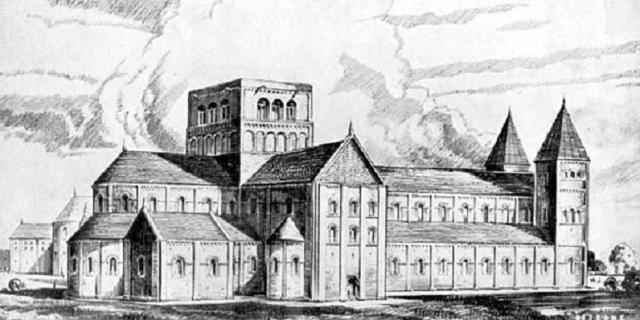The Daily Express website has a report about the most recent excavations on the site of Lenton Priory in the inner suburbs of Nottingham. The report ties it to the burial there of Philip Marc, King John’s sheriff of Nottingham and so to the legend of Robin Hood. I am inclined to look beyond that - the Robin Hood stories originate in Yorkshire and only became located in Nottinghamshire in about the seventeenth century - and look more at what is being revealed about Lenton Priory itself. One new discovery is a hitherto unexplored eastern Lady Chapel. The report can be read at Archaeology breakthrough as Robin Hood's Sheriff of Nottingham may have been found
Lenton was a Cluniac foundation, one of the nine sizeable English monasteries of the Order. As one of the others of that group was in my home town of Pontefract I have always had a particular interest in the Cluniacs. It was an especial joy to visit Cluny itself in 2014.
Virtually nothing survives above ground today of Lenton Priory as the report indicates, but in the nineteenth century parish church is the spectacular early twelfth century carved font from the medieval priory church, which clearly had a parochial function. Recovered from a garden it was given to the nee church in 1842.
I regret that when I used to visit Nottingham as a boy to visit friends I never got to see this wonderful survival.




No comments:
Post a Comment